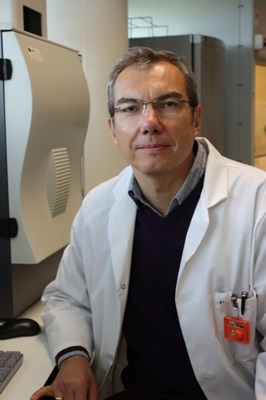Oct 14 2015
Scientists have found what could one day lead to a promising treatment for those with a crippling disease, Duchenne muscular dystrophy.

Professor Darek Gorecki
The research is the first to establish that one specific treatment not only improves muscle function but also reduces brain damage and bone loss in mice with the disease.
Experiments are at an early stage and no tests have yet been carried out on humans but the results offer more than a glimmer of hope.
Researchers managed to block a single protein which behaves differently in people with Duchenne muscular dystrophy, stopping it from disrupting the signalling between cells.
That protein – P2RX7 – has now become a very attractive target for new research and the researchers hope, clinical trials.
The research is published in the journal PLOS Medicine.
The lead author is an international authority on the disease, Professor Darek Gorecki, at the University of Portsmouth.
He said:
Removing P2RX7 has had a measurable effect on many of the disease’s mechanisms affecting the skeletal and cardiac muscles, inflammatory cells, brain and bone. Given the impact of the genetic blockade and the preliminary results of pharmacological treatment, we are very hopeful that this might be a good therapeutic target.
Duchenne muscular dystrophy is an inherited disease in which the muscles die, leading to severe disability and death. It is exacerbated by bones weakening and is also linked with cognitive deficits. It affects one in about 3,500 boys worldwide.
Scientists have known for some time that the muscle death in these boys is caused by a mutation in their specific gene but more recently Professor Gorecki and colleagues discovered the additional involvement of P2RX7, which disrupts the signals between cells.
The research published today has found a way of decreasing the effects of this abnormality and reducing disease symptoms by removing or blocking P2RX7.
Professor Gorecki and colleagues in Italy, the US, France and Russia found through a combination of molecular, histological and biochemical methods that genetically-treated mice had improved muscle structure and strength, and less inflammation. They also had improved cognitive abilities and stronger bones. The improved physical and mental functioning was still evident 20 months later and the treatment has not yet been found to have any side effects. In addition, there was considerable improvement in some of these parameters within four weeks of treatment with P2RX7 drugs, which give hope that a pharmacological treatment reducing disease severity could be developed.